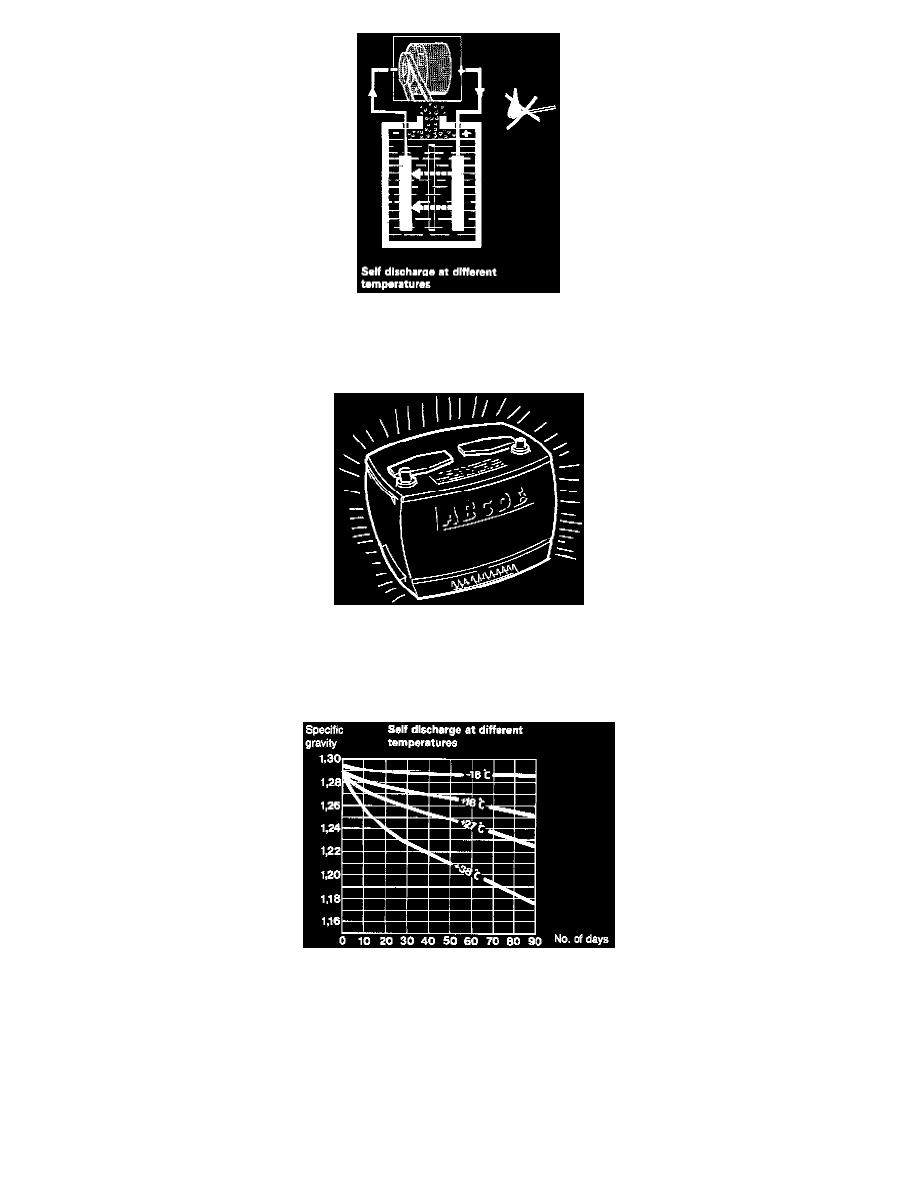940 L4-2.3L SOHC VIN 88 B230F (1992)

Gassing
At the end of the charging process when the voltage of the battery has risen to 14.4 V (at 25 °C) the battery begins to bubble strongly. This is due to the
fact that water dissociates and forms oxygen (02) at the positive plate and hydrogen (H2) at the negative plate.
Oxygen And Hydrogen Mix Are Extremely Explosive
WARNING: If oxygen and hydrogen mix in the correct proportions oxyhydrogen is produced. Such mixtures are extremely explosive and great
care should be taken since the risk of personal injury and damage is great. Bear this in mind and make sure that you switch off the
battery charger before disconnecting the terminals.
Self discharge
Care must be taken to avoid running down a battery too much because insoluble crystals of lead sulphate will be formed. The crystal formation reduces
the capacity of the battery accordingly.
Batteries which are not used discharge by themselves; the rate of discharge depends on temperature, time and the condition of the battery.
If a battery is to be left unused for a long period of time make sure that it is fully charged and stored in a clean dry place, preferably below zero. If the
battery is in good condition no further charging will then be necessary. However a battery stored in a warm place must be recharged every second month.
Capacity
